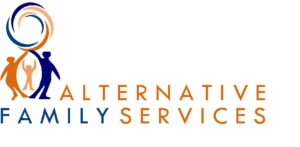Understanding Wraparound Services
Have you come across the term “wraparound services”? With its increasing utilization in the human services sector, it’s essential to delve into what wraparound programs entail and why they’re gaining prominence.

Wraparound services encompass the comprehensive support and services youth and their families may need to thrive.
Defining Wraparound Services
The California Department of Social Services defines wraparound services as a “strengths-based planning process conducted in a team setting, engaging with children, youth, and their families.” This approach diverges from the traditional problem-focused models and leans into a strengths-based, needs-driven method.
In simpler terms, wraparound services encompass the comprehensive support and services youth and their families may need to thrive. This support varies based on what the involved children and youth, along with their family members, require. Potentially, a high-fidelity wraparound plan could provide housing support, mental health care, employment assistance and behavioral health services. The objective is to offer a holistic support system.
If the services provided to youth and families are not comprehensive, then the odds of future success are limited.
The National Wraparound Initiative (NWI) has identified the “Ten Principles of the Wraparound Process” as:
- Family voice and choice
- Team based
- Natural supports
- Collaboration
- Community based
- Culturally competent
- Individualized
- Strengths based
- Persistence
- Outcome based
Implementing Wraparound Services
UC Davis provides insight into the wraparound services process. “From the start, a child and family team are formed and works directly with the family as they identify their own needs and strengths. The team develops a service plan that describes specific strategies for meeting the needs identified by the family. The service plan is individualized, with strategies that reflect the child and family’s culture and preferences. California Wraparound is intended to allow children to live and grow up in a safe, stable, permanent family environment.”
With wraparound services, there is usually a wraparound team in place, responsible for initial plan development and then ongoing engagement and team preparation. The benefit to this approach, according to the NWI, is that it ensures that all of the potential needs youth and their families require are being addressed.
“Wraparound – before it was even called Wraparound – got started several decades ago as a response to what was obviously *not* working well for children and youth with serious mental health or behavioral challenges, and their families,” the NWI has noted. “Back then, the kinds of intensive and helpful services and supports that children and families needed were often [unavailable in their communities. As for the available services, they were often focused on what the systems or providers wanted families and children to do and not on what children and families needed to thrive.] This meant that children and families would be involved with multiple systems and providers, with each one developing a separate plan telling the child and family what to do. Not surprisingly, the outcomes of this situation were not good. Many children ended up placed in residential treatment far away from their families and communities, often for exceptionally long periods of time. After being out of home, it was hard for children to come back and do well in their home communities and schools. In contrast, Wraparound programs can keep children in their communities, producing better outcomes at lower cost.”
Wraparound Services in Foster Care
Within regions like California, wraparound services have become the preferred model for assisting youth and families, providing valuable pre and post foster care placement. The primary aim is to bolster successful reunification after foster care, minimizing the chance of subsequent placements.
Furthermore, wraparound services serve a preventative function, equipping families with essential resources and support, reducing the likelihood of youths entering foster care.
UC Davis underscores how wraparound services align with the Family First Prevention Services Act (FFPSA) in that it “presented an opportunity for California to expand Wraparound services and ensure that all families are supported when youth transition from a short-term residential treatment program (STRTP) back to a family-based home.”
This blog post examines FFPSA further: https://www.afs4kids.org/blog/the-family-first-prevention-services-act-what-you-should-know/
Wraparound services have emerged as a transformative tool, enhancing the lives of youths, families and communities. The NWI confirms, “When implemented well, Wraparound has been shown to produce better outcomes at similar or lower cost, and with high levels of family and youth satisfaction.”
